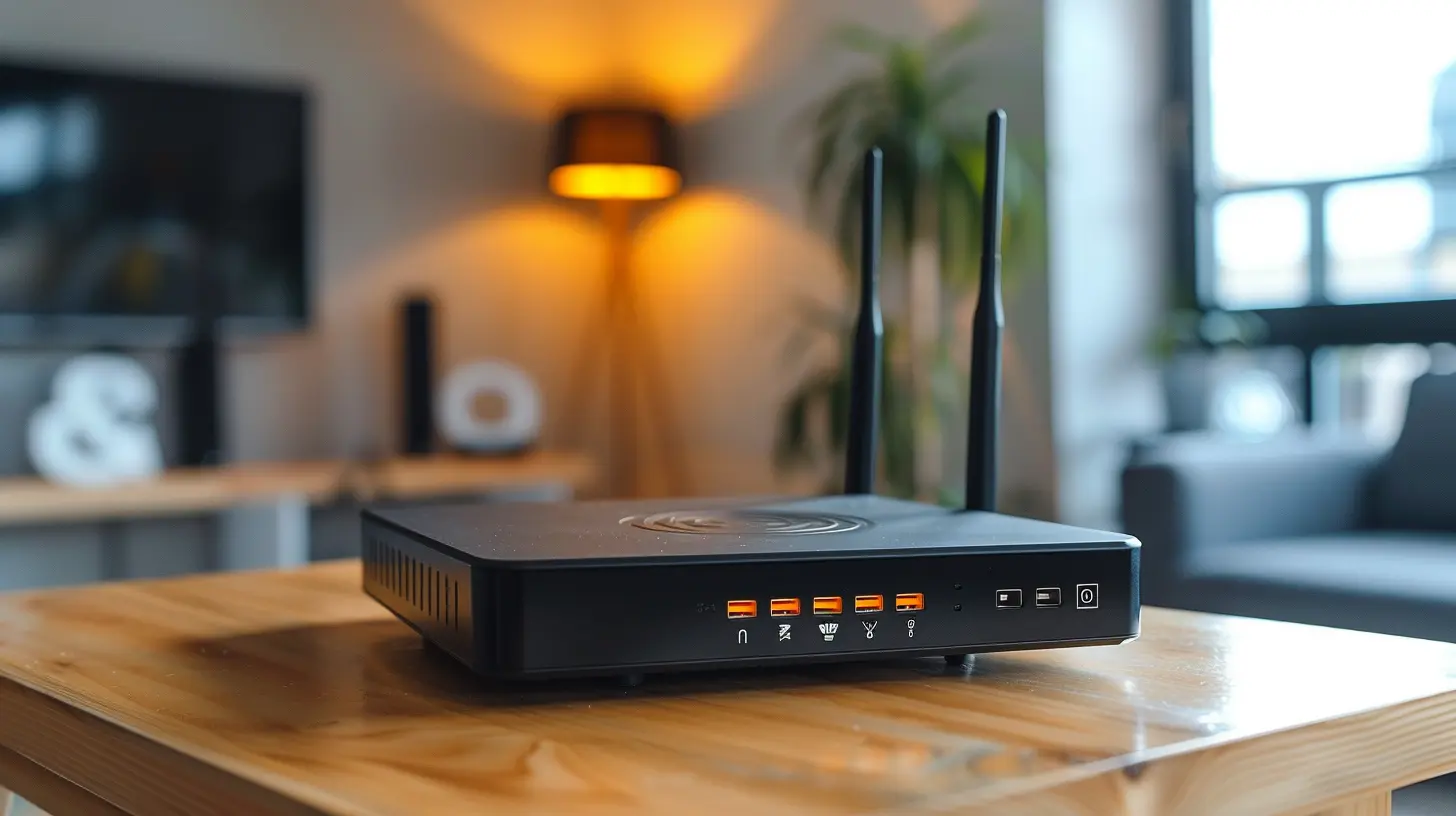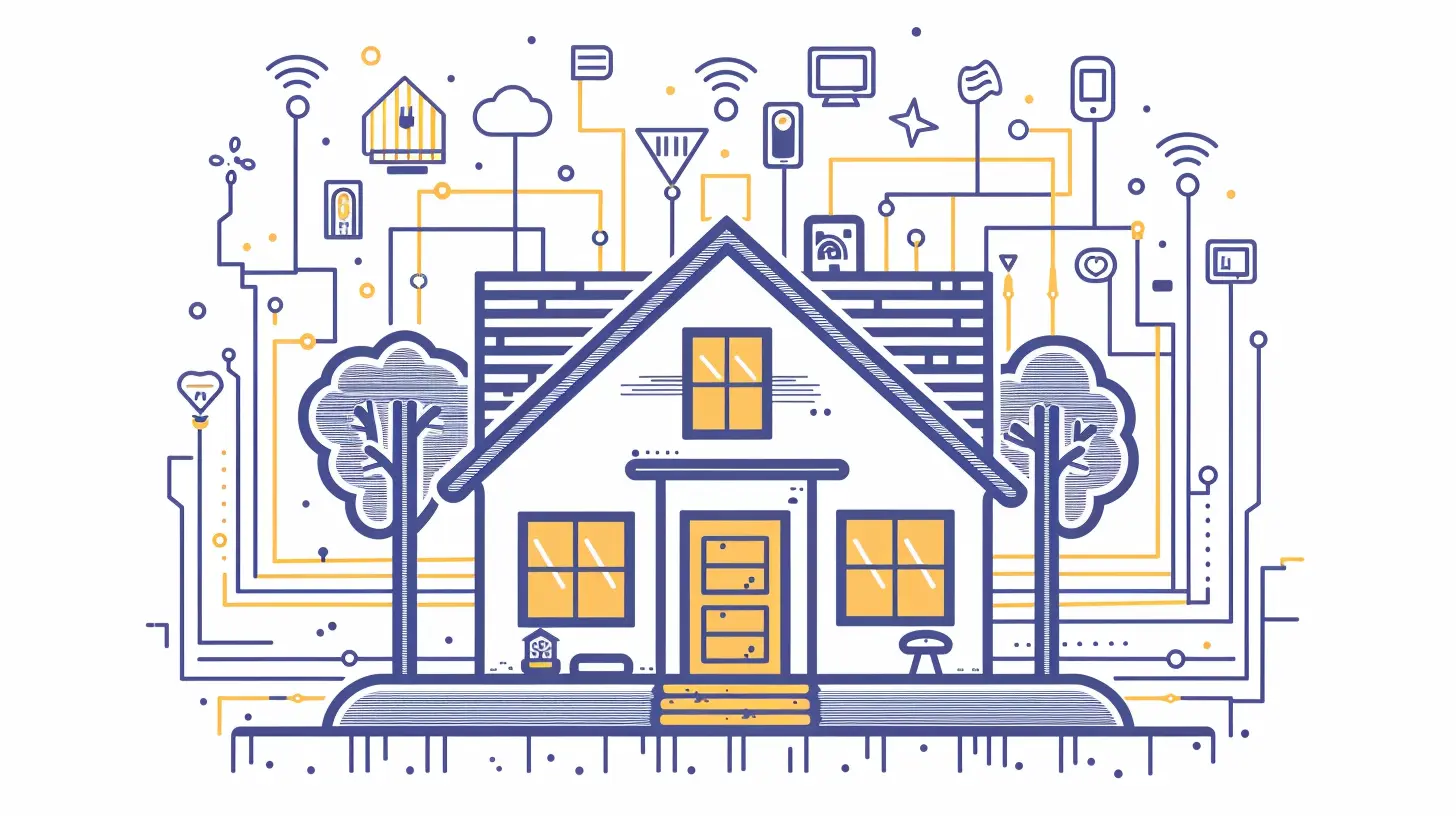Building a Reliable Home Network on a Budget
2 July 2025
Let’s get real: in today’s world, having a solid home network isn’t a luxury—it’s a necessity. Whether you're working from home, streaming your favorite shows, gaming with your friends, or trying to keep your smart home running smoothly, your internet connection is the invisible glue holding everything together. But here’s the kicker—building a reliable home network doesn’t have to blow a hole in your wallet.
If you've been putting off upgrading your home network because of price, or if you're overwhelmed by all that technical mumbo jumbo, stick around. I'm going to walk you through how to build a fast, secure, and rock-solid home network—all without draining your bank account.

Why Your Home Network Matters (More Than You Think)
Think of your home network like plumbing. You don’t really notice it when it’s working, but the moment it starts leaking or clogging up—oh boy, you’re in for a headache.A weak or unreliable connection leads to:
- Laggy Zoom calls (hello, awkward freeze-frame moments!)
- Slow downloads and buffering
- Frustrating smart home failures
- Poor online gaming experiences
Now imagine all that disappearing. Sounds good? Let’s break it down.
Step 1: Take Inventory of Your Needs (and Wants)
Before you run out and throw cash at the problem, slow down for a sec. Ask yourself:- How many devices do I have?
- Is everyone streaming 4K at the same time?
- Are there any gamers in the house?
- How big is my home?
- Do I really need Wi-Fi in the backyard shed?
Write this stuff down. Trust me, it’s going to guide every decision you make next.
The goal here? Don’t overspend on gear you don’t need—or worse, underspend and suffer later.
Step 2: Don’t Rent—Buy Your Modem and Router
This is the #1 money-saving tip out there. Internet service providers (ISPs) love charging you a “rental fee” for modems and routers—usually around $10 to $15 per month. That adds up fast.Instead, buy your own modem and router. You’ll break even in less than a year, and you’ll get way better performance.
Choosing a Budget-Friendly Modem
Look for a DOCSIS 3.0 or 3.1 model that’s compatible with your ISP and speed plan. No need to go over the top.Top picks under $100:
- Motorola MB7621
- Netgear CM500
Simple, reliable, and they just work.
Selecting the Right Router
Here’s where most people screw up—they go for the flashiest router with six antennas and RGB lights. Unless you’re living in a mansion or running a mini data center, you don't need a $300 beast.Instead, opt for something with:
- Dual-band Wi-Fi (2.4 GHz and 5 GHz)
- Decent range (check user reviews)
- At least four Ethernet ports
Solid budget options:
- TP-Link Archer A7
- ASUS RT-AC66U B1
Set it and forget it.
Step 3: Go Old School—Use Ethernet Where You Can
Wi-Fi is great, but nothing beats the speed and reliability of a wired connection. If your office or gaming setup is near your router, do yourself a favor—run an Ethernet cable.Why?
- Zero interference from walls or neighbors
- Lower latency (perfect for gaming)
- Faster, more stable speeds for Zoom calls
Cat6 cables are dirt cheap and future-proofed for gigabit speeds. Grab a couple of them online, and you’re golden.
Step 4: Extend Smartly (Avoid Wi-Fi Dead Zones)
Got rooms where Wi-Fi crawls slower than a turtle with a limp? Don’t worry—you don’t need a $500 mesh network setup.Use Powerline Adapters
These bad boys use your home’s electrical wiring to deliver internet. Sounds like magic, right? It kind of is.Plug one near your router. Plug the other one where you need coverage. Boom—network.
Popular models:
- TP-Link AV1000
- Netgear Powerline 1200
They’re low-key lifesavers for basements and garages.
Try Budget Mesh Systems (If Needed)
If your house looks more like a maze than a home, a basic mesh system can blanket your place in Wi-Fi for cheap.Worth looking into:
- TP-Link Deco M4
- Google Nest WiFi (refurbished models save cash)
They self-manage and adjust for traffic. Basically, set 'em up and forget 'em.
Step 5: Secure Your Network Like a Pro
A cheap network that’s open to hackers isn’t a bargain—it’s a disaster waiting to happen.Don’t panic, though. Locking things down just takes a few simple tweaks.
Must-Dos:
- Change the default admin password (and username too!)- Use WPA3 encryption (or at least WPA2)
- Turn off WPS (it’s a hacker’s dream)
- Keep your firmware updated
Also, limit who has access. Your neighbor doesn’t need to stream Netflix on your dime.
Step 6: Optimize, Don’t Overpay
Now that your network's up and humming, let’s fine-tune a few things to squeeze out every drop of performance.Pick the Best Channel
Routers usually auto-select channels, but they’re not always smart about it—especially in crowded apartments.Use a Wi-Fi analyzer app to find less crowded channels and switch manually.
Prioritize Devices
Many routers let you set Quality of Service (QoS). This means you can give priority to work-from-home devices or gaming consoles.It's like giving your most important devices VIP access to your bandwidth.
Step 7: Future-Proof Without Overspending
Tech changes fast, but that doesn’t mean you need to be on the bleeding edge. You just need to plan smart.When you're upgrading, think about:
- Wi-Fi 6: It’s not a must, but if the price is right, go for it. It handles more devices better.
- Modem compatibility: Don’t buy a modem that can’t handle your ISP’s upgraded speeds down the road.
- Mesh expansion: Get systems that allow you to add more nodes later.
Budget today, but think about next year too.
Bonus Tip: Score Deals on Refurbished Gear
Retailers, especially on platforms like Amazon Renewed or even manufacturer websites, often sell refurbished gear at steep discounts. Don’t turn up your nose at the word “refurbished.” Most of these products are tested, certified, and work like new.Pro tip: Look for items with a warranty or return window, just to be safe.
The Bottom Line
Building a reliable home network doesn’t mean dropping a fortune. With a little planning, a touch of DIY spirit, and some smart shopping, you can create a blazing-fast, rock-solid network that won’t flake out when you need it the most.Here’s the truth—your devices are only as good as the network they’re on. If your Zoom calls are glitchy, your HD streams are buffering, or your online games lag like crazy, the issue probably isn’t your laptop or phone—it’s your network.
Stop living with a “meh” setup. Upgrade where it counts. Keep your spending tight. And finally enjoy the kind of seamless internet you deserve, without burning your paycheck.
TL;DR – Budget Home Network Cheat Sheet
| Step | What to Do | Why it Matters ||------|------------|----------------|
| 1 | Assess your needs | Avoid overspending or underspending |
| 2 | Buy your modem/router | Save monthly rental fees |
| 3 | Use Ethernet where possible | Faster and more stable |
| 4 | Deal with dead zones smartly | Don’t overspend on mesh right away |
| 5 | Lock down your network | Keep intruders out |
| 6 | Optimize settings | Get smoother performance |
| 7 | Think long-term | Avoid buying gear twice |
What’s Next?
Now that you've got the roadmap, it's time to act. Don’t procrastinate—your future self (and everyone using your Wi-Fi) will thank you.Get the gear. Plug it in. Run a few speed tests. Tweak your setup. And finally experience what buttery-smooth, frustration-free internet feels like—even on a budget.
all images in this post were generated using AI tools
Category:
NetworkingAuthor:

John Peterson
Discussion
rate this article
2 comments
Wilder Jordan
This article beautifully balances practicality and affordability. Your tips make building a reliable home network accessible for everyone. Thank you!
November 8, 2025 at 12:08 PM

John Peterson
Thank you so much for your kind words! I'm glad you found the tips helpful and accessible!
Carly McCune
In our increasingly connected world, a reliable home network isn’t just a convenience; it’s a foundation for digital interactions, learning, and remote work—making budget-smart choices essential.
July 7, 2025 at 12:15 PM

John Peterson
Absolutely! A solid home network is crucial for productivity and connectivity. Prioritizing smart, budget-friendly options can greatly enhance your digital experience.


